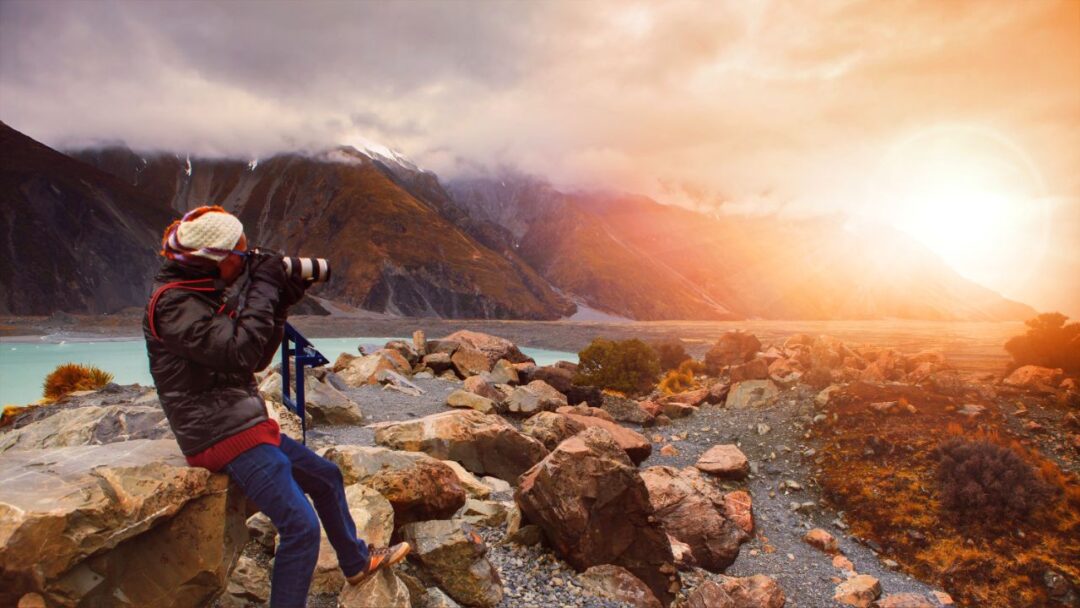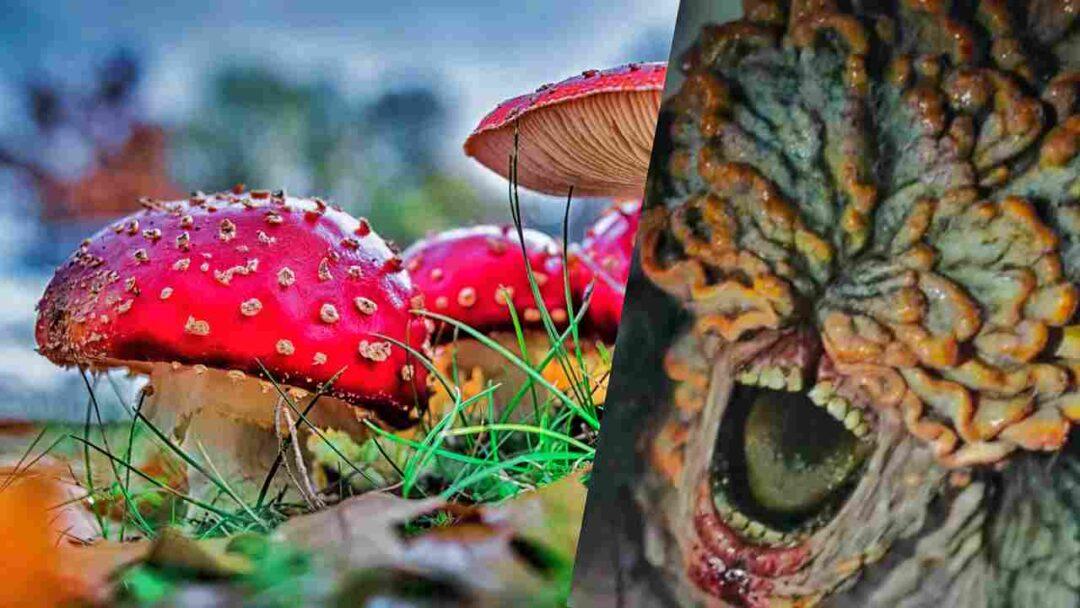Table of Contents

Introduction
Landscape photography is a captivating art form that allows us to capture and preserve nature’s breathtaking beauty. It is a medium through which we can express our creativity, demonstrate the diversity of the world around us, and elicit emotional responses from the viewer. In this article, we will delve into the art of landscape photography, looking at the techniques, equipment, and mindset needed to create stunning images that transport viewers to the enthralling realms of nature.
The Power of Composition
The art of composition is central to landscape photography. The arrangement of elements within the frame to create a visually appealing and balanced image is referred to as composition. Lines, shapes, textures, and colors can all be used strategically to direct the viewer’s gaze and convey a specific mood or message. The rule of thirds, leading lines, and foreground interest are all important techniques for capturing the viewer’s attention and creating a sense of depth and dimension in the photograph.
Harnessing Natural Lighting
Lighting is an important aspect of landscape photography because it can dramatically change the mood and impact of a photograph. Early morning and late afternoon golden hours provide soft, warm light that enhances the natural beauty of the landscape. Understanding the quality and direction of light is critical for producing visually appealing images. Backlighting, side lighting, and the use of filters can help you capture the desired atmosphere while also bringing out the details and textures in your landscapes.
Developing Artistic Vision
Landscape photography is an art form that requires a strong artistic vision in addition to technical skills. It entails developing a distinct point of view and the ability to see the extraordinary in the ordinary. You can capture photographs that convey a sense of place and elicit emotional responses by immersing yourself in the landscape, observing its nuances, and understanding its ever-changing moods. Develop your creativity, try new angles, and strive to tell a compelling story with your images.
Essential Equipment for Landscape Photography
While equipment does not define a photographer’s artistry, having the right tools can greatly improve your landscape photography experience. A sturdy tripod is an essential companion for long exposures and ensuring image sharpness. Wide-angle lenses are popular for photographing vast landscapes because they emphasize the scale and grandeur of the scene. Longer exposures are possible with neutral density filters, emphasizing motion or creating dreamy effects. Invest in quality equipment that meets your specific needs and allows you to bring your creative vision to life.
The Role of Patience and Persistence
Landscape photography frequently necessitates patience and perseverance. The elements of nature are unpredictable, and capturing the perfect shot may necessitate multiple visits to a location, waiting for ideal weather conditions, or patiently awaiting the interplay of light and shadow. Patience and perseverance are virtues that reward photographers with one-of-a-kind opportunities and extraordinary moments that others may never see. Accept the journey and be fully present in nature, knowing that the right shot will come to those who are persistent and receptive.
Frequently Asked Questions (FAQ)
What is landscape photography?
Landscape photography is a type of photography that captures the beauty and essence of natural landscapes such as mountains, forests, seascapes, and other scenic vistas. It entails displaying the natural environment’s grandeur, colors, textures, and overall mood.
What equipment do I need for landscape photography?
A digital camera with manual controls, a wide-angle lens for capturing expansive vistas, a sturdy tripod for stability, and various filters to control light and enhance the image are required to capture stunning landscape photographs. It’s also useful to have extras like a remote shutter release and a backpack to transport your gear.
How can I find great locations for landscape photography?
There are several methods for finding great landscape photography locations. To gain insights and recommendations, you can conduct research online, consult local photographers, or join photography communities. Visiting national parks, nature reserves, and areas of outstanding natural beauty can also result in breathtaking landscapes.
What are some composition techniques for landscape photography?
Landscape photography relies heavily on composition. Consider the rule of thirds, leading lines, foreground interest, framing, and balancing elements in the frame as techniques. These techniques aid in the creation of visually appealing and engrossing compositions that draw the viewer’s eye into the scene.
How do I capture sharp landscape photos?
Sharpness in landscape photography is achieved through a combination of factors. To increase depth of field, make sure your camera is stable on a tripod and use a smaller aperture (higher f-stop). Focus one-third of the way into the scene, using manual focus as needed. Using the camera’s self-timer or a remote shutter release can also help to reduce camera shake.
How do I enhance colors in landscape photography?
A few techniques can be used to capture vibrant colors in landscapes. Consider shooting during the golden hour, when the light is soft and warm (early morning or late afternoon). Using a polarizing filter can also deepen the blues in the sky and increase overall color saturation. Colors can be enhanced further in post-processing by adjusting white balance and making selective color adjustments.
What is the best time of day to photograph landscapes?
Landscape photography is often best done during the golden hour, which occurs shortly after sunrise or before sunset. During this time, the soft, warm light adds a lovely quality to the scene, casting long shadows and creating a captivating atmosphere. Different lighting conditions throughout the day, on the other hand, can create unique moods and opportunities for landscape photography.
How can I capture the movement of water in landscape photography?
Use a slower shutter speed to capture the smooth and flowing effect of water. This causes the water to blur and creates the illusion of motion. To accomplish this, consider using a tripod for stability and neutral density filters to reduce the amount of light entering the camera, allowing for longer exposures.
What post-processing techniques can enhance landscape photos?
Landscape photography can benefit greatly from post-processing. Adjusting exposure, contrast, and saturation can bring out the details and colors in a scene. Furthermore, enhancing specific areas, removing distractions, and fine-tuning the overall composition can result in a more impactful and visually pleasing image.
How can I convey a sense of scale in landscape photography?
In landscape photography, conveying a sense of scale helps to highlight the vastness and grandeur of the scene. Including a human figure or an object of known size in the frame can provide viewers with a reference point. Capturing elements such as towering trees, distant mountains, or juxtaposing different sizes and perspectives can also highlight the scale within the frame.
Conclusion
Landscape photography is an enlightening and rewarding art form that allows us to connect with nature on a deeper level and share its enthralling beauty with others. Understanding composition principles, utilizing natural lighting, developing an artistic vision, and embracing patience and persistence can help you take your landscape photography to new heights. Remember that each photograph is a unique expression of your point of view, and it is through your lens that others can appreciate and cherish the natural world’s wonders.
We’ve looked at the techniques, equipment, and mindset needed to master the art of landscape photography in this article. You can embark on a lifelong journey of capturing the beauty of nature and sharing it with the world through your lens by applying these insights and nurturing your creativity.
Eco-Friendly Travel: Sustainable Practices for Nature Enthusiasts : NEXT POST





Pingback: Underwater Caves: Exploring The Enchanting World | Animal TV Hindi